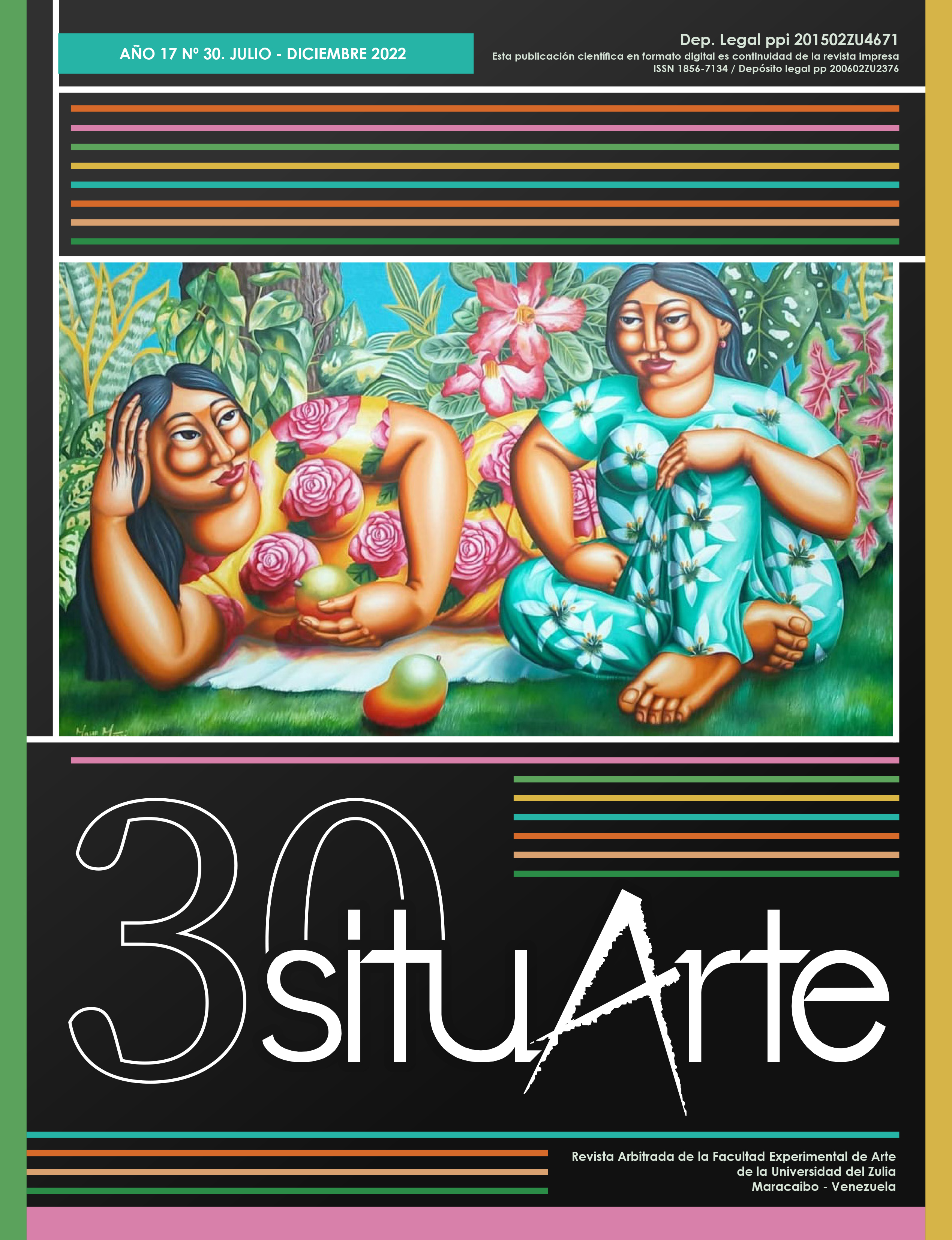Música, terapia y formación: educación emocional a través del ritmo
Resumen
El ritmo es la base de la vida, pues guía el equilibrio emocional, metabólico y funcional del cuerpo, la mente y el espíritu. Los estados emocionales que favorecen la disparidad de reacciones se desarrollan en situaciones de estrés, terror, exaltación, melancolía, placer profundo, alegría o ansiedad, afectando cada vez más a jóvenes y niños. La alternativa al desequilibrio es la respiración consciente, que pretende recuperar el equilibrio y el estado
métrico funcional del cuerpo. Sin embargo, ¿qué ocurre con quienes no pueden atender en plenitud debido a su naturaleza? En este artículo se describen experiencias y ejercicios profesionales en educación no formal, rehabilitación y bienestar de personas con discapacidad, utilizando la música conducida por parámetros objetivos para estimular aspectos esenciales de la humanidad: emociones, imaginación y corporalidad.
Descargas
Citas
Braun Janzen, T., Koshimori, Y., Richard, N. M., y Thaut, M. H. (2021). Rhythm and Music-Based Interventions in Motor Rehabilitation: Current Evidence and Future Perspectives. Frontiers in Human Neuroscience, 15, 789467. https://doi.org/10.3389/fnhum.2021.789467
Bueche, F. (2009). Ciencias físicas. Barcelona: Reverté.
Deschaussées, M. (1991). El intérprete y la música. Ediciones Rialp.
Galińska, E. (2015). Music therapy in neurological rehabilitation settings. Psychiatria Polska, 49(4), 835-846. https://doi.org/10.12740/PP/25557
Green, E. A. H. (1957). Orchestral Bowings and Routines. Ann Arbor: Ann Arbor Publishers.
Korn, A. (1949). Obras completas. Presentadas por Francisco Romero. Buenos Aires: Editorial Claridad.
La batalla de los discapacitados por sus derechos en el mundo (07 de julio de 2016). Compromiso RSE. Disponible en: https://www.compromisorse.com/rse/2016/07/01/la-batalla-de-los-discapacitados-por-sus-derechos-en-el-mundo/
Lacarcel Moreno, J. (1995). Musicoterapia en Educación Especial. Murcia: Universidad de Murcia.
Martínez, I. C., Valles, M., y Tanco, M. (2012, octubre). La Audición de la Música como Forma Sónica en Movimiento. Conflictos cinéticos y energéticos entre superficie y estructura. II Seminario sobre adquisición y desarrollo del lenguaje musical en la enseñanza formal de la música. Buenos Aires. Disponible en: https://www.aacademica.org/martinez.isabel.cecilia/114
Organización de las Naciones Unidas (ONU) (2006). Convención Internacional sobre los Derechos de las Personas con Discapacidad. Nueva York.
Pérez Porto, J., y Gardey, A. Persona - Qué es, en el derecho, definición y concepto. Disponible en: https://definicion.de/persona/
Roth, E. A., y Wisser, S. (2004). Music therapy: The rhythm of recovery. The Case Manager, 15(3), 52-56. https://doi.org/10.1016/j.casemgr.2004.03.004
Salamanca Herrero, D. (2003). Musicoterapia en Educación Especial. Pulso: Revista de Educación, 26, 129-141.
Sánchez Ramos, M. V. (2019). Expresión y comunicación. Madrid: Editorial Editex.
Savater, F. (2006). Fabricar humanidad. Revista PRELAC, 2, p. 26-29.
Schön, D., Akiva-Kabiri, L. y Vecchi, T. (2018). Psicologia della musica. Roma: Carocci editore.
Simón, V. (2017). El corazón del mindfulness: la consciencia amable. Barcelona: Sello Editorial.
Thaut, M. H., McIntosh, G. C., y Hoemberg, V. (2015). Neurobiological foundations of neurologic music therapy: rhythmic entrainment and the motor system. Frontiers in Psychology, 5. https://doi.org/10.3389/fpsyg.2014.01185
Vásquez-Dextre, E. R. (2016). Mindfulness: Conceptos generales, psicoterapia y aplicaciones clínicas. Revista de Neuro-Psiquiatría, 79(1), 42-51.
Yao, W., Wei-Yi, P., Fei, L., Jun-Sheng, G., Xian, Z., Xun L., Yu-Long, W. (2021). Effect of Rhythm of Music Therapy on Gait in Patients with Stroke. Journal of Stroke and Cerebrovascular Diseases, 30(3), 105544. https://doi.org/10.1016/j.jstrokecerebrovasdis.2020.105544
Zorrilla, A. (2018, 30 de enero). Tiempo, forma y movimiento. Una idea pre-platónica del ritmo. Rhuthmos. Disponible en: https://www.rhuthmos.eu/spip.php?article2146













